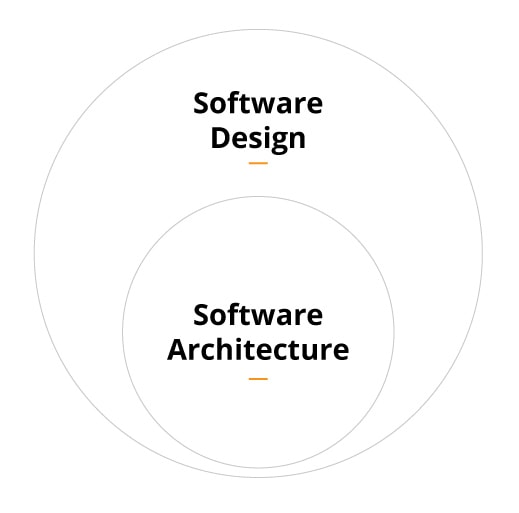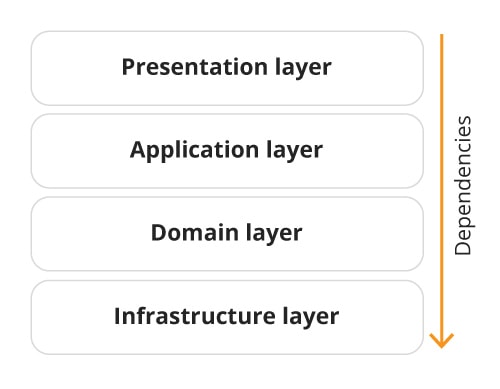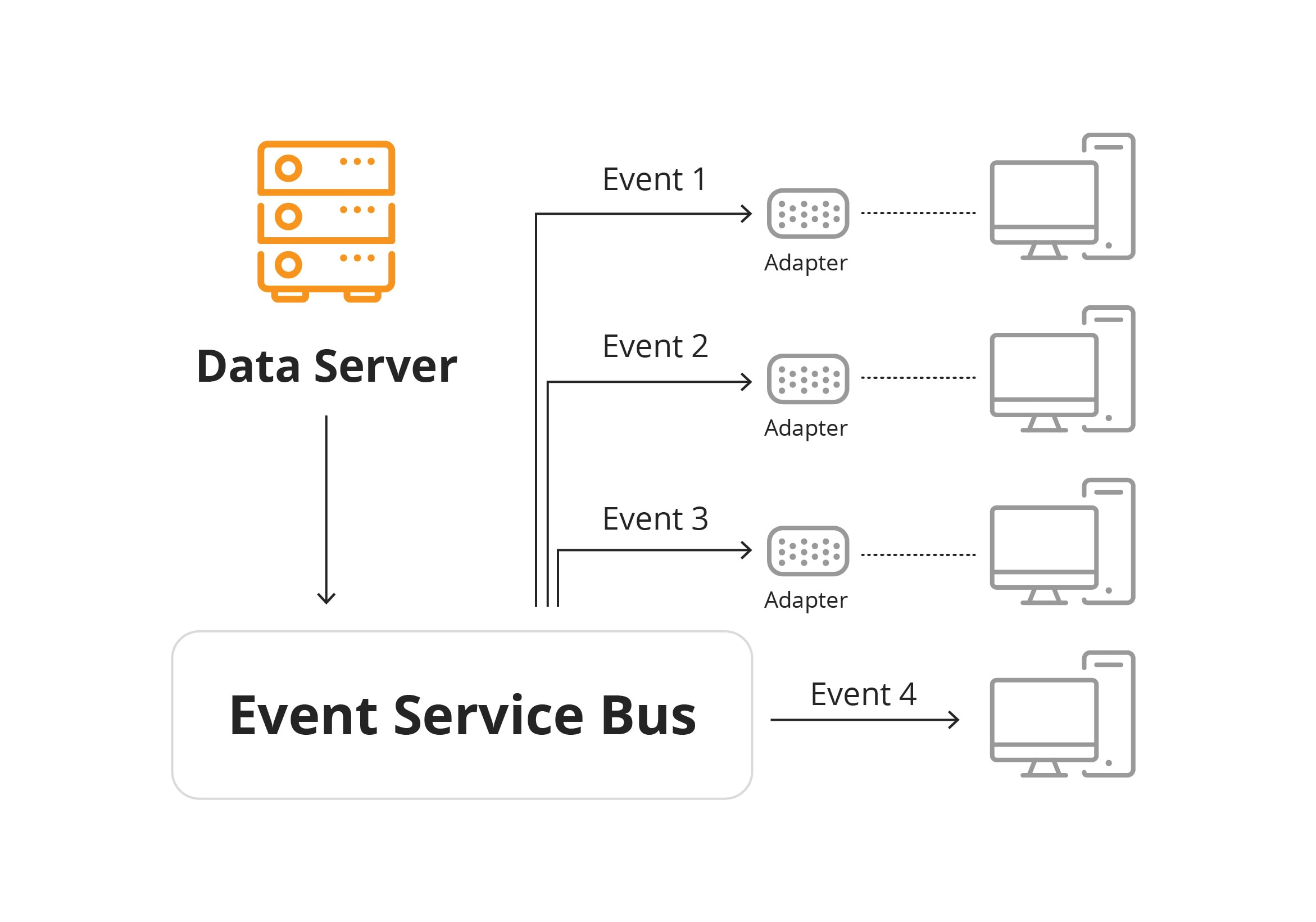
Software architecture in software engineering: types, challenges and best practices
We all use Software architecture on a daily basis without even knowing, but it is absolutely everywhere. From sending a quick message on WhatsApp to ordering takeout online from your favourite restaurant, software architecture is the unseen foundation of technology that most people don’t even know exists. So why don’t we hear about it more often?
The complexity and importance of software architecture in engineering
The main purpose of software architecture is to represent and embody the design decisions of the system that is being built.
Every software project will have a brief, and the software architecture is the first step to bringing that brief to life. Some key functions of software architecture include:
It helps stakeholders visualise, understand, and analyse a system’s qualities.
It focuses on the structure (rather than implementation).
It can be used to anticipate expensive choices in a project before they’re made.
It is used as the basis for making core decisions to ensure high-quality work.
Software architecture describes the development of software systems, including how their different components will work together.
Let’s break down its context into three main areas:
Functional requirements:
This answers the question: What is the software supposed to do?
Non-functional requirements:
Functionality: This looks at the quality of the software’s features.
Reliability: It checks if the software works consistently.
Usability: This asks if the software is user-friendly.
Efficiency: Here, we see if the software uses resources well.
Maintainability: This considers how easy updating or fixing the software is.
Scalability: It determines if the software can handle more users or data as it grows.
Restrictions:
Legal needs: Some laws might affect how the software is built.
Standards: There are general rules or industry-specific ones that the software should follow.
Cost: There might be a budget limit for building the software.
Time-to-market: Sometimes, there’s a rush to release the software quickly.
Talent: The skills of the available team can affect the software’s design.
By understanding these areas, teams can make better decisions about the solution architecture design and development. This can save time and money, as potential problems can be spotted early on. Thus, software architecture helps projects run smoothly and meet their goals.
Software architecture vs software design: differences and implementation
The software architecture of a system is the set of structures needed to reason about the system, which comprise software elements, relations among them, and properties of both.– Clements, Bass,Kazman 2012
Software architecture is the foundational element of software design. So what’s the difference between the two?
Software architecture and design in software engineering can be likened to conventional architecture and design of buildings. When designing physical structures, the architect creates the concept while the designer (or engineer) works out the specific details required to actually make the project happen.
The architect is concerned with the ‘big picture’ questions of what the project is, how it will look, what its function is, and so on, whereas the designer/engineer is concerned with how to make the architect’s ideas work. The software architecture is all done before any of the actual coding begins.
Software architecture involves understanding and organising a system, all of its components, their interactions, the environment in which they operate, and the core principles which will be used to design the software.
It is developed with the project’s mission or goal in mind and serves as the basis for the rest of the design project.
Software design is all about how the software architecture can be implemented into the overall system. This involves:
Coding
Using specific design patterns
Choosing classes, interfaces, functions and responsibilities
Working with specific components and modules
Common types of software architecture patterns
When we create a new building, we have to make choices about which materials to use, what kind of foundation to build it on, which style to use and so on. Software architecture is no different. There are quite a number of ways that architectures can be structured and patterned, with some more popular than others.
Here are the most commonly used architectural patterns:
Layered (N-tier) pattern architecture
This database-driven architecture is probably the most common approach as it is a great way to store information effectively in tables. It has been used for some of the biggest software frameworks like Express, Java EE, and Drupal.
In a layered approach, the data begins at the top layer and works its way down until it reaches the bottom (which is typically a database). As it descends, each layer has a different task, focusing on the data and solving issues such as reformatting the values.
Event-driven architecture
This approach is agile and with high performance. Large numbers of programs spend the majority of their time waiting for an event to occur (such as a human using a computer). It is built around the idea that sometimes data will need to be processed, and other times it won’t. This is managed through a central unit that processes all the data sent to it before delegating them to the relevant modules.
Where a layered architecture will pass data through all levels, event-driven architectures will only send the data to the appropriate location; hence, why they are considered highly efficient. This architecture is great at adapting to complex environments. It can be scaled easily and extended if new event types are used.
However, testing can only be done on individual modules if they are independent. Otherwise, they will have to be tested in a fully functional system. Error handling can be challenging to structure if several modules are handling the same events.
Client-server architecture
In the client-server architecture style, end users, referred to as “clients,” request services from “servers,” which handle and process data. This pattern is most commonly seen in web applications, where the browser acts as the client and communicates with the server to provide the necessary services.
This style is used to enhance the software development process, as well as to improve data security and management.
Microservices architecture
The microservices architecture is a technique that simplifies complex programs by dividing them into smaller services that can still communicate with each other. Each service is designed to solve a specific business problem, such as payments or identification.
These services run in containers, making them more modular and easier to manage. They can be written in different programming languages, used in various contexts, and maintained by different groups of programmers.
Overall, microservices provide greater flexibility and scalability for software development.
Microkernel architecture
A kernel is like the brain of a software system, controlling everything the system does. The microkernel design keeps this “brain” as small and straightforward as possible, dealing only with the most crucial tasks. Other tasks, like managing files or connecting to devices, are handled by separate pieces outside this core. This way, if one piece has an issue, the central component remains unaffected.
In the microkernel design, these separate pieces communicate with the core brain using a method called “inter-process communication.” This design makes adding, changing, or fixing parts easier without disturbing the entire system. It’s like having a central control room focusing only on primary decisions while specialised departments handle detailed tasks.
Cloud-native architecture
Using a cloud-native design approach allows you to reap the benefits of cloud computing. Applications built with this architecture are made of services that are loosely linked with each other, which makes each service scalable and reliable, making it possible to use them across multiple cloud environments.
This results in high availability and flexibility. Adopting this method leads to better use of resources, shorter launch times, and better adaptability to changing workloads.
The challenges of architecture in software engineering
Software architecture does have its limitations, which must be considered carefully throughout the development process. If you fail to identify vulnerabilities and problem areas, you could make errors in your choice of priorities and fail to manage trade-offs. These could all lead to delays in delivering the project, more significant costs, or even a complete failure of the project itself.
An architect’s job is undoubtedly challenging because it involves selecting the right architectural patterns, keeping up with constantly evolving technological trends, and balancing short-term wants with long-term goals. Software architect needs to handle multiple tasks, including documenting software architecture and communicating with stakeholders. As systems grow larger, their designs become more complex, making it difficult to satisfy the needs of all persons involved.
As software architecture is still a relatively new discipline, there can be a lack of tools available to companies to use it. The architecture is yet to be ‘standardised’, which can cause disparities between projects and companies. Analysis methods for predicting whether an architecture adequately meets the implementation needs are not always developed enough to create a reliable result.
Lastly, the concept of software architecture is not always understood or valued enough by companies or their stakeholders. This can result in a lack of awareness of its importance in a custom software development process and a lack of understanding of a software architect’s role in the design process as a whole. These can all lead to errors in the processes along the way, higher costs, and overlooking potentially critical issues.
How Cloud and AI are changing software architecture development?
With AI, the process of evaluating codes and logs has become much quicker, thereby reducing the time taken to make changes to the backend and streamlining software development services. Additionally, AI-powered integration platforms automate system integrations, saving developers time.
Predictions for Artificial Intelligence in Software Development:
Rapid code generation will enable real-world testing of architectural designs.
Architectural decision-making will be more data-driven, which could lead to a reorganisation of responsibilities within development teams.
Decisions regarding how to set up systems will be easier and more accurate thanks to AI.
Using AI will make the process of generating and understanding architectural designs streamlined and automated.
You can read more about software development here:
The pros and cons of using GitHub Copilot for software development [survey results]
What is software audit and why is it performed?
How to create a proof of concept in software development?
What is the role of a team leader in software development?
Best software architecture practices in software engineering
In order to minimise the risks and limitations mentioned previously, good practices must be put in place from the outset.
Some essential practices include:
Keeping comprehensive documentation of all aspects of the architectural design, their interrelationships with other aspects of the project, and the goals or functions they should achieve.
Implementing a system of regularly evaluating the architecture to determine whether it’s achieving its purpose. If not, then actions can be taken to rectify the problem before it becomes a critical issue down the road.
Continuously analysing the system to ensure that it is conforming to the intended architecture type.
Putting systems in place at every stage of the architecture process to maintain quality assurance of the system’s tasks, goals, and outputs.
If these points are carried out effectively, it will allow software architects to make accurate predictions about a product’s quality and make sound, informed decisions. There will be fewer problems down the line as they will be flagged at a much earlier stage.
The imperative of strong architecture in effective software engineering
Software architecture has become an integral part of software engineering and design. Done well, it can save companies and their stakeholders enormous amounts of both time and money. It predicts how and where issues may occur and how to solve them before implementation.
Now is the perfect time to get up to speed on a function that is no longer emerging; it has emerged.
Having a good software architecture is not only about avoiding issues but also about creating a roadmap for future scalability and adaptability. A proper architecture ensures that the software remains strong and suitable for its intended purpose as technology advances and business requirements change.
Recognising the importance of a robust architecture, it’s time for your business to take the lead in this essential domain. Contact Future Processing today, take advantage of our software design consultancy services and let our experts guide you towards creating software that can withstand the test of time.







